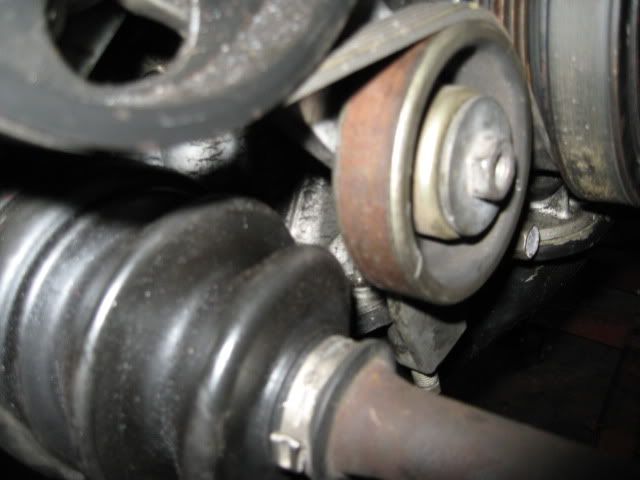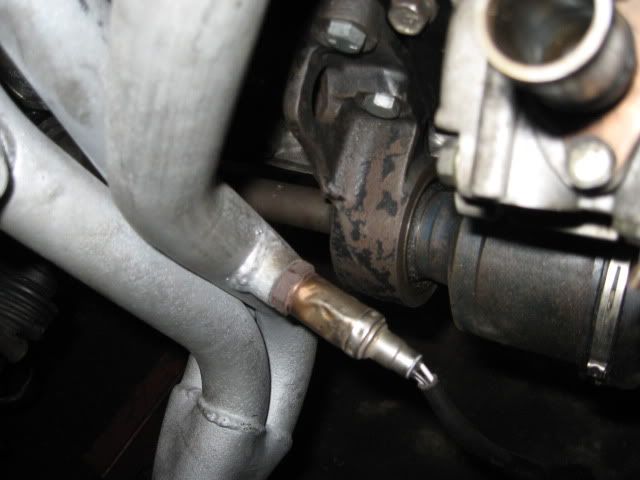Announcement
Collapse
No announcement yet.
My KLZE Festiva Build Thread
Collapse
X
-
He was talking about exhaust gasses.. from the exhaust valve on out. The further you get from the engine you lose more energy. What happens in the chamber is a different story.Last edited by resuwrecked; 02-17-2010, 11:43 PM.
-
You don't want that energy though. Otherwise why run an intercooler?Originally posted by FB71 View PostCorrect. And the laws of Thermodynamics dictate that as a gas cools, it contracts. If this gas is traveling in a conductor of fixed volume, that contraction will lower the velocity of the gas. This is because much of the energy contained within the gas (in the form of heat) has already been lost, and is unrecoverable (entropy). Therefore, the gas traveling thru a point further from the source has less energy than gas traveling thru a point closer to the source. In effect, this means there is less energy available to be recovered, the further from the source. Soooo..... rear turbo=less efficient than front turbo.
Usable energy comes from the combustion reaction itself, whose timing can be controlled via spark. Too much energy (in the form of heat) in your combustion chamber before the spark will cause detonation. Usable only in the form of giving you a great story and a wall of shame trophy for your garage- usually a cratered piston or rod.
Leave a comment:
-
Did some more studying of the wiring, (i'm not liking it so far) and the engine sensors run on two separate harnesses that connect together, so i have to sort out what wires are needed and whats not needed and i plan to cut out all the un-needed wires to keep the engine clean, what a headache
But i thought it was a good time to take a pic and show just how tight of a fit everything is at the back of the engine, but also how everything is going to work nicely
The boot gets very very close to the pulley but does not touch.... not bad for using 4 cyl axles on a V6 eh? lol

And the hanger bearing is close to the header and O2 sensor but again, it all clears so i won't have any issues and yes i know the O2 sensor is pretty beat up, i'll probably get a new one but this was for mock up
and yes i know the O2 sensor is pretty beat up, i'll probably get a new one but this was for mock up

Leave a comment:
-
krazy4 - i do agree that a front mounted turbo is plenty more efficient then a rear mounted turbo, but plain and simple, i do not have the room in the engine bay for a turbo, i mean i'm stuffing a V6 DOHC into an econo-box engine bay, so that in itself is an accomplishment
Now i have seriously thought about doing an N/A build because yes N/A KL sound sick! but to build an engine N/A to get the same kinda power as a turbo'd engine will take more money for the N/A build,
So i know the pros and cons to each set-up, N/A or rear mounted turbo, but since i'm not a rich man and i love the sound of a turbo, i'll go the cheaper way to make more power with less money involved
Nerd - Not yet, i have a set of mounts to make before i can put the engine back in, so in the meantime i'll get the engine bay wired up so when i can drop the engine back in, i "should" just have to plug it in and fire it up :lol:Last edited by Damkid; 02-17-2010, 05:44 PM.
Leave a comment:
-
the worst part is that I understood everything FB71 said... reminds me of fluid dynamics class, lol.
Got that thing running yet man?
Leave a comment:
-
Seems like I am more correct lol.Originally posted by FB71 View PostCorrect. And the laws of Thermodynamics dictate that as a gas cools, it contracts. If this gas is traveling in a conductor of fixed volume, that contraction will lower the velocity of the gas. This is because much of the energy contained within the gas (in the form of heat) has already been lost, and is unrecoverable (entropy). Therefore, the gas traveling thru a point further from the source has less energy than gas traveling thru a point closer to the source. In effect, this means there is less energy available to be recovered, the further from the source. Soooo..... rear turbo=less efficient than front turbo. However, if there is more energy contained within the gas than can be usably recovered, then said losses may not significantly affect the performace of a given system, depending upon the efficiencies of the components involved.
In conclusion, both sides of the discussion are correct, to a point.
Leave a comment:
-
Correct. And the laws of Thermodynamics dictate that as a gas cools, it contracts. If this gas is traveling in a conductor of fixed volume, that contraction will lower the velocity of the gas. This is because much of the energy contained within the gas (in the form of heat) has already been lost, and is unrecoverable (entropy). Therefore, the gas traveling thru a point further from the source has less energy than gas traveling thru a point closer to the source. In effect, this means there is less energy available to be recovered, the further from the source. Soooo..... rear turbo=less efficient than front turbo. However, if there is more energy contained within the gas than can be usably recovered, then said losses may not significantly affect the performace of a given system, depending upon the efficiencies of the components involved.Originally posted by pr0nst4r View PostIt's physics. No amount of misinformation can overcome physics.
In conclusion, both sides of the discussion are correct, to a point.
Leave a comment:
-
Thats cool that you figured it out. Guess it's just my opinion that a front mount setup is better, but as I was thinking about it, there isn't much piping for a rear mount festiva compared to most cars.Originally posted by eurotiva View PostLook up my car bro............REAR turbo festiva keepin up with the dohc's.............
Leave a comment:
-
Look up my car bro............REAR turbo festiva keepin up with the dohc's.............Originally posted by krazy4 View PostI will beg to differ, I don't want to jack his thread though.
Do you have any experience with a rear mounted setup, or are you just listening to what STS says? lol
Leave a comment:
-
I will beg to differ, I don't want to jack his thread though.Originally posted by pr0nst4r View PostI will beg to differ, as I'm sure others here will as well. It allows for mounting a turbo when there is less space then usual, has no less lag than a traditional turbo setup as the whole system is pressurized and allows you to run higher pressures (because of temps) before you need to get an intercooler, saving money.
Just like with every turbo system, it's about what parts are used, not where the turbo is mounted. It's physics. No amount of misinformation can overcome physics.
Do you have any experience with a rear mounted setup, or are you just listening to what STS says? lolLast edited by krazy4; 02-17-2010, 11:45 AM.
Leave a comment:
-
i just watched them all (and some other vids on youtube ) lissen carefuly to part 1, 2 and 3.... thats where "most" of the "rear mount turbos = bad" myths are proven busted... part 4 has some info about water/meth... part 5 is mostaly about tuning and there customer service...
Last edited by sasquatch; 02-17-2010, 03:38 AM.
) lissen carefuly to part 1, 2 and 3.... thats where "most" of the "rear mount turbos = bad" myths are proven busted... part 4 has some info about water/meth... part 5 is mostaly about tuning and there customer service...
Last edited by sasquatch; 02-17-2010, 03:38 AM.
Leave a comment:
Leave a comment: